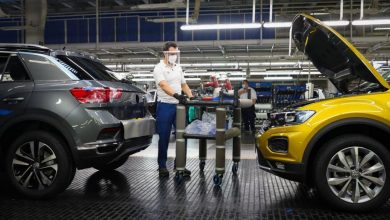
Renault turns to PSA veteran Le Borgne to improve synergies
Le Borgne, who watched Tavares turn around a money-losing PSA and later Opel with a relentless focus on efficiency, was blunt in his diagnosis of Renault and alliance partner Nissan’s engineering shortcomings.
“I saw huge assets, but also huge areas for improvements,” Le Borgne told investors, analysts and journalists who had gathered at Renault headquarters in Boulogne-Billancourt on the outskirts of Paris. “Engineering and capex-wise, we are really far from excellence.”
These are tough times for the alliance, which has been reeling from the November 2018 arrest of Chairman Carlos Ghosn. Sales are down; Nissan announced its first quarterly loss since 2009; and Renault posted its first annual loss in a decade.
Le Borgne is expected to play a central role in getting the alliance back into the black, Delbos said, adding that he was joining other “new talents” on the executive committee, including Denis Le Vot, the former head of Nissan North America, and incoming CEO Luca De Meo.
By any measure, Le Borgne is a leading star of the French automotive industry. He received an Automotive News Europe Eurostar award in the Product Development Executive category in 2018. Earlier this month, he was named “Man of the Year” by the French magazine Journal de l’Automobile, which cited his efficient and innovative r&d work at PSA and the expectation that he would revitalize Renault.
Le Borgne cited several areas where Renault is falling short, including validation costs, standardization and outsourcing. The group benefits from a worldwide network of technical centers, in Brazil, India, Korea, Romania and Spain, he said, but those assets could be better utilized. “We must leverage these assets and those competencies,” Le Borgne said. “It’s not really the case today.”
Most important, Renault and Nissan need to go beyond mere platform sharing to collaborate on the “top hat” — the body and other components that sit on the platform, he said.
The automakers collaborated on the CMF (common module family) platforms, which underpin minicars (CMF-A), small cars (CMF-B), compact and midsize (CMF-C/D) and electric vehicles (CMF-EV). According to the 2017 alliance midterm plan, they will be used by 70 percent of all vehicles by 2022.
Among vehicles that share platforms are the Nissan Qashqai and Renault Kadjar compact SUVs, Nissan X-Trail and Renault Koleos midsize SUVs, and the Renault Captur and Nissan Juke small SUVs. CMF electric vehicles have not yet been launched.
“From what I saw, those platforms are efficient in terms of product, in terms of space, in terms of the way they are constructed,” Le Borgne said. “But at the same time, the body types are being done in different places. And frankly, that’s silly.”
Said Delbos: “We don’t share enough in terms of upper body and commonality. If we shared more, we would have less expenses in r&d, more savings in purchasing.”
“It would be worse without the alliance,” she added, “but it’s not sufficient today.”
One path to more efficiency is the new “leader-follower” product development plan that the alliance unveiled in January as part of a global reorganization of its operations, Le Borgne said.
Under the plan, Nissan, Renault or Mitsubishi will take the leadership of r&d and product development for a certain project, with the other companies sending engineers to assist and to make sure their requirements are met. In the current system, teams across the alliance work together.
“We need to extend ‘leader-follower’ on the top hats,” he said.
But the news was not all bad, Le Borgne said, adding that he has driven “each and every” car in Renault’s lineup, including commuting to work in vehicles with the E-Tech hybrid system, which Renault is promoting as a lower-cost alternative to competitors’ hybrid and plug-in hybrid systems. The new Clio small hatchback and Captur, which will both get the system this summer, in particular, “are really gorgeous and really high-performing,” he said.
“It’s far more efficient than the conventional 48 volt hybrids that you find in the competitors,” he said, describing E-Tech as a “golden nugget.”
Font: Automotive News Europe





